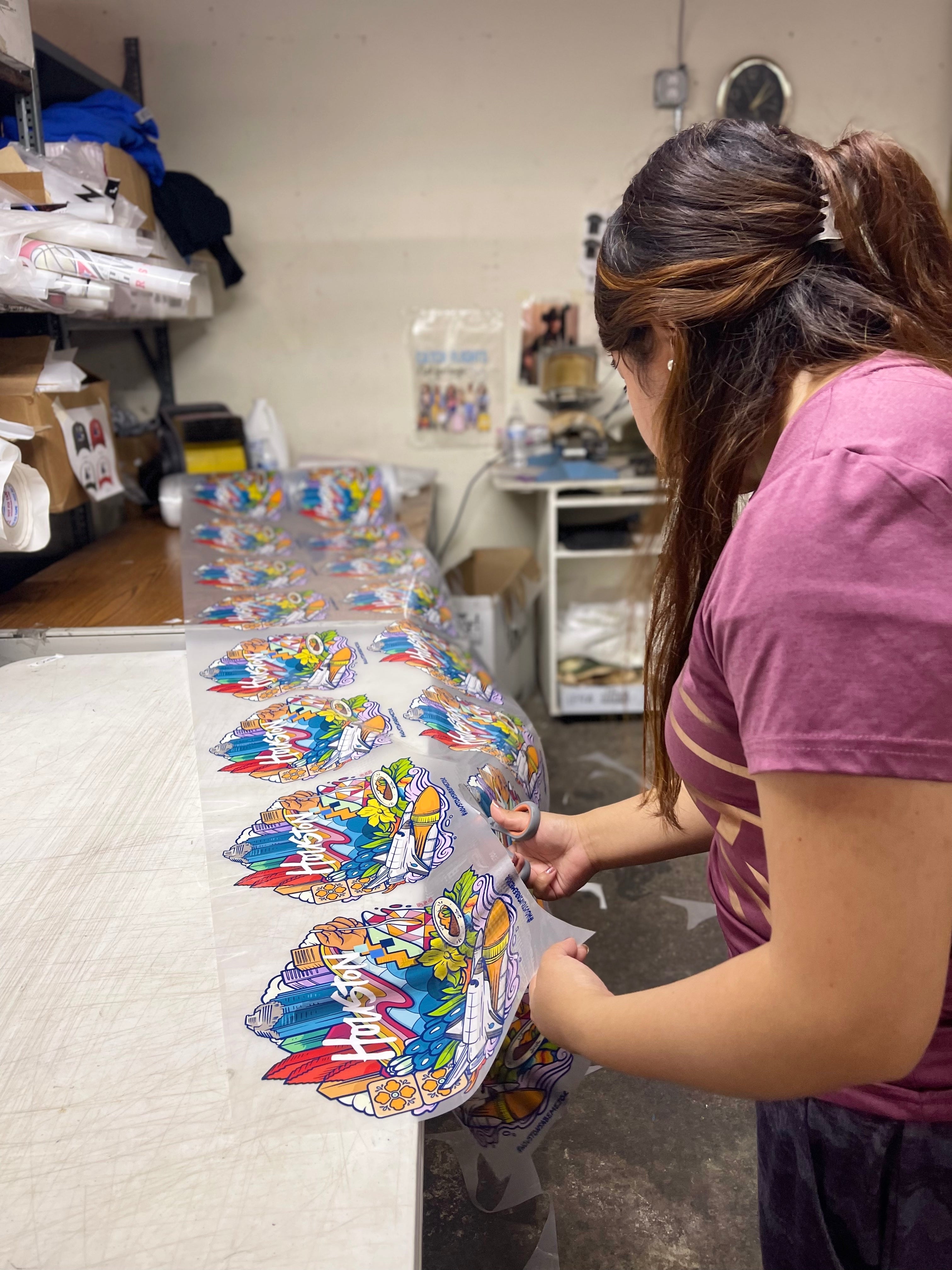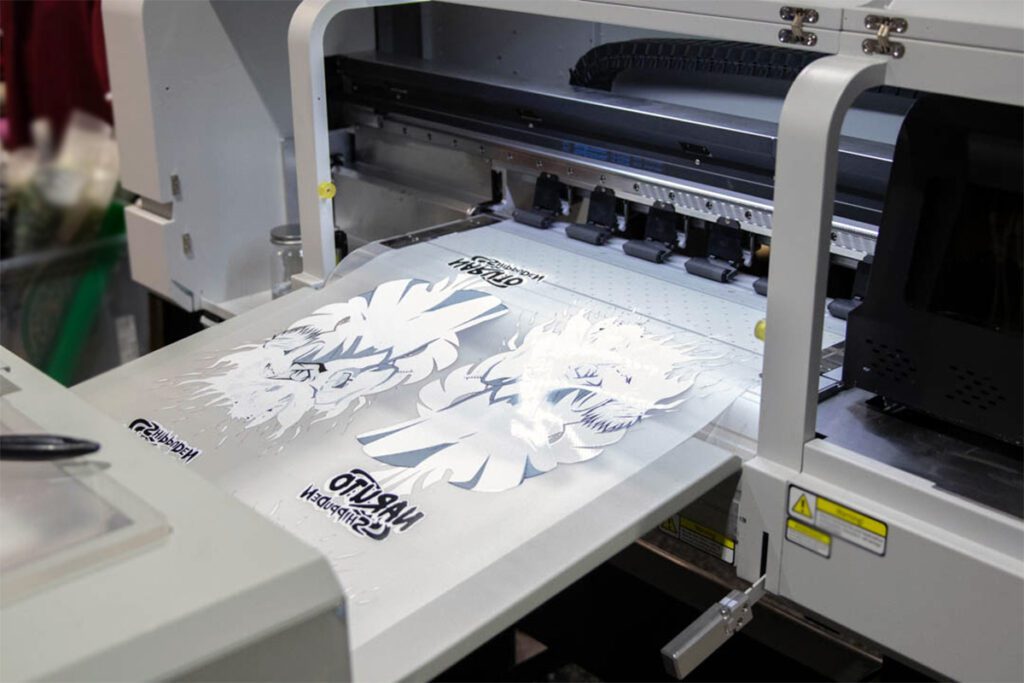Ultimate Overview to DTF Printing Strategies for Spectacular Fabric Styles
Getting started on the trip of mastering DTF printing techniques can open a world of opportunities for producing aesthetically fascinating fabric styles. As the textile market remains to progress, staying in advance of the contour with ingenious printing techniques is necessary. In this overview, we will explore the detailed information of DTF printing, from understanding the essential fundamentals to unraveling progressed color techniques that can elevate your designs to new heights. Remain tuned as we explore the nuances of choosing the best products, perfecting the printing procedure, and getting over usual obstacles to achieve spectacular outcomes.
Recognizing DTF Printing Essentials
DTF printing, a process that includes transferring designs from a special movie to fabrics utilizing warmth and pressure, forms the structure of fabric printing strategies. The first step in DTF printing entails producing or choosing a style that will be published onto the fabric.
Once the style is published on the film, it is then very carefully placed onto the material, ensuring appropriate placement and positioning. The next vital step involves applying warmth and stress making use of a heat press maker. This procedure turns on the dyes or pigments on the film, triggering them to sublimate and bond with the textile fibers permanently. The outcome is a magnificent, lasting textile style that is washable, versatile, and immune to fading. In general, recognizing the essentials of DTF printing is important for grasping this contemporary fabric printing technique.
Selecting the Right Fabric Products
Having actually developed the foundational principles of DTF printing methods for fabric styles, the next vital consideration hinges on picking the proper fabric materials to complement this innovative process properly. The success of a DTF print mostly depends on the compatibility in between the picked material and the printing method. When selecting textile products for DTF printing, it is necessary to consider the material's composition, weave, and structure. Fabrics that function well with DTF printing include polyester blends, spandex, nylon, and various other artificial materials. These fabrics generally have a smooth surface area that allows for vibrant and comprehensive prints. Furthermore, the stretchability of these products can fit the heat transfer procedure included in DTF printing without distorting the design. It is suggested to prevent natural fibers such as cotton or silk, as they might not generate the same degree of print clarity and longevity. By choosing the best fabric materials, developers can maximize the possibility of DTF printing to develop sensational and durable textile styles.

Mastering the Printing Refine
To succeed in DTF printing techniques for textile styles, grasping the printing procedure is important for accomplishing premium and regular results. The printing process in click over here DTF includes a number of crucial actions that call for precision and interest to detail. To start with, preparing the artwork for printing is vital. This consists of ensuring the style is appropriately sized and placed for the fabric. Next off, the style is published onto a special DTF movie making use of a suitable printer with the appropriate setups to achieve optimal color vibrancy and clarity (DTF Printing). Once the design is published, it is then moved onto the textile making use of a warmth press machine. The temperature, pressure, and period of warmth application have to be meticulously regulated to ensure proper attachment of the layout to the fabric. Additionally, understanding the peeling process after warmth pushing is crucial to avoid any kind of damages to the design or fabric. By sharpening each of these steps in the printing process, developers can continually create spectacular and durable fabric designs with DTF printing strategies.
Enhancing Designs With Shade Methods

Additionally, try out shade slopes can bring a sense of movement and fluidity to the design. By blending colors flawlessly, a gradient impact can be accomplished, adding a modern-day and dynamic touch to the textile layout. In addition, utilizing shade obstructing strategies can produce strong and striking visuals by juxtaposing different solid colors in unique sections of the style.
In addition, including metal or neon colors can provide a unique and appealing element to the textile design, making it attract attention and show a sense of vibrancy. When tactically applied, these shade methods can elevate the total visual charm of you could try these out textile styles, making them much more unforgettable and captivating.
Troubleshooting Common DTF Printing Issues
After discovering various shade techniques to improve fabric styles, address it is important to resolve common DTF printing concerns that might occur during the production process. Additionally, concerns with image quality and sharpness can happen due to low-resolution images or incorrect printing techniques. By being mindful of these usual troubles and implementing the required troubleshooting steps, you can improve the overall quality of your DTF printed textile styles.
Verdict
Finally, grasping DTF printing techniques is essential for producing spectacular textile layouts. By understanding the basics of DTF printing, picking the appropriate materials, and boosting designs with shade techniques, one can accomplish excellent outcomes. It is necessary to troubleshoot typical concerns that might emerge throughout the printing procedure to ensure a successful result. With technique and interest to detail, one can develop beautiful and special textile layouts utilizing DTF printing strategies.
DTF printing, a procedure that entails moving designs from a special film to fabrics using warmth and pressure, creates the foundation of fabric printing methods.Having developed the foundational principles of DTF printing techniques for fabric designs, the next critical consideration exists in picking the appropriate textile products to enhance this cutting-edge procedure effectively. By selecting the right textile products, designers can make best use of the capacity of DTF printing to produce resilient and spectacular fabric styles.
To succeed in DTF printing techniques for fabric layouts, grasping the printing procedure is essential for achieving constant and top notch results. DTF Printing. By refining each of these actions in the printing process, developers can constantly produce resilient and stunning fabric layouts with DTF printing methods
Comments on “DTF Printing Revolution: Unleashing Creativity in Textile Design and Production”